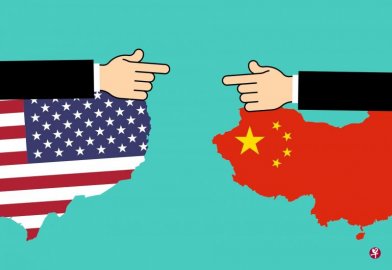
The popularity of coronary virus in 2019 should promote us to rethink how to support humans.Today, the world has ushered in a unique opportunity to adopt long -term measures to promote healthy diet, encourage farmers to produce more types of food, and strengthen cooperation between public health, food and agricultural sector.Agricultural research can play a key role in changing the food system and making it more sustainable and tough.
The necessity of changes is obvious.First of all, unhealthy diet is one of the main risk factors of crown disease.Severe acute respiratory syndrome, SARS-COV-2 (SARS-COV-2), is mainly infected with overweight, diabetes or cardiovascular diseases. All these diseases are related to bad diet.
The crisis also exposed the extreme vulnerability of the global food system.The social distance and blockade measures adopted to curb virus transmission have greatly reduced people's income, which also reduces global food demand.As a result, food prices fell from January to May 2020, which greatly affected the livelihood of hundreds of thousands of small farmers around the world.
In addition, restaurants and schools closure, logistics influences, and lack of immigration workers to harvest crops, resulting in waste of a large number of agricultural output.Many farmers are increasingly hesitant to whether they have carried out new planting season, but some highly competitive manufacturers are booming: In the first five months of 2020, Brazilian soybeans exports to China a record high.
However, due to the vulnerability of the grain system, any new supply decreases or export restrictions may quickly reverse the current price trend.Grain prices may rise sharply, further destroying global food security.
In fact, the United Nations Food and Agriculture Organization estimates that at least 14.4 million people may be malnourished due to the economic crisis caused by crown disease in 101 grain import countries.In extreme cases, the growth of GDP (GDP) in the world in 2020 decreased by 10 percentage points, and the number of malnutrition will increase to 80.3 million.
Therefore, in the short term, the government must not only provide financial support for individuals and enterprises affected by the epidemic, but also take action to prevent the food crisis.Decision makers should not damage trade, but should provide convenience for trade and improve collaboration and information exchange between grain producers and buyers, especially at the local level.
Long -term measures must include promoting a healthy diet.Over the past 60 years, global diet has become more homogeneous, and it has become more and more staple foods with high energy and low trace elements.Three crops of rice, corn and wheat provide more than half of the calories of plants for human beings.Overall, people (but the poor are even more) insufficient to eat nutrients such as fruits, nuts, seeds and whole grains.As a result, about 11 million people die every year.
Differential types of nutrition crops, it is a top priority to introduce them to recipes again.For example, quinoa, African millet (a kind of nutritious grain, increasing demand) and African Bambara (Bambara) peanuts are higher than most major grains, and can be in a harsh environment.Growth.Further research can increase production, reduce prices, and let these products enter more people.Government and donors can also help provide more funds for local producers of these and other orphan crops.
In addition, researchers can strengthen the main crops of the current diet, especially the most poor groups through conventional breeding methods.Bio -strengthening means that through the selective hybridization of high nutrition and high -yield varieties, the development of nutritional varieties.This includes the genetic characteristics of the use of genetic banks or thousands of crops that still grow in the origin.
The supply side adjustment should not be here, because grain production is the main reason for environmental destruction and biodiversity losses.A large amount of fresh water is used in agriculture, and 30%of the global greenhouse gases are discharged, destroying natural habitats, it is used to open up space for livestock and crops.However, agricultural research has long been concentrated in improving productivity, rather than sustainability. Investment flows to better seeds, animals with stronger disease resistance, and more efficient reproductive technologies for minority animals and plant species.The government encouraged this trend with financial support, regulatory standards and trade agreements.
However, production and popularization of cheap calories have led to attachment damage, which is mainly in terms of nutrition and local development.Because the Calibri competition depends on the value chain of a small number of basic crops that concentrates in a few limited countries, many other countries have become net import countries.The epidemic highlights the vulnerability of a small number of producers, and the necessity of a shorter and more diverse value chain.
The current grain production model is also driven by about $ 600 billion of farmers subsidies each year. These subsidies mainly exist in developed economies.These mechanisms have led to excessive supply and price decline, thereby limiting food output that lacks fiscal strengths to support farmers.
Solving this problem requires a variety of decisive actions.We need to study more food products that can maintain more diverse and healthier diets; emerging and developing economies can produce many products.Decision makers must also build a regenerative production system to promote biodiversity and improve the quality of the soil and water, which will be greatly conducive to adapting to climate change.Government, international organizations, and non -governmental organizations must take the lead to create a profound change that can make these agricultural research schedule and become a possible institutional environment.
The epidemic highlights the urgent need for agricultural transformation.The economic reconstruction after the epidemic is an excellent opportunity for everyone to provide better nutrition and health.
(Author Mauricio Cardenas is former Minister of Finance of Columbia and is now a senior researcher at the Global Energy Policy Center of Columbia University. Juan Lucas RESTREPO is the director of the Biological Diversity International Alliance and Tropical Agricultural International Center.)
English Title: The Pandemic Must Transform Global Agriculture
Copyright: Project Syndicate, 2020




